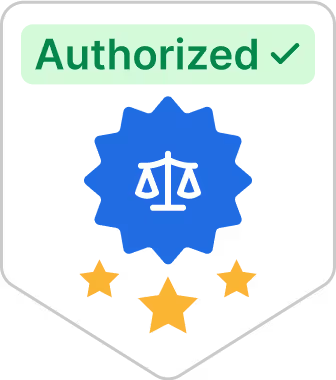FAFSA Guide

Each year, the federal government provides over $110 billion to students in the form of federal financial aid.1 If you want to be considered for these types of financial aid, you need to fill out the Free Application for Federal Student Aid (FAFSA).
The FAFSA is a free application that enables you to find out if you qualify for any federal grants, financial assistance, scholarships, work-study positions, or student loans.
In this FAFSA guide, we’ll provide a brief overview of how the application process works.
What Are The FAFSA Eligibility Requirements?
Generally, anyone who is thinking about going to college should apply for the FAFSA, regardless of their family income.
The only eligibility requirements for the FAFSA are that you must:2
- Have a high school diploma, GED, or state-approved home-school high-school education
- Be accepted or enrolled in a participating higher education program
- Have a valid Social Security number (SSN)
- Be a U.S. citizen or eligible noncitizen
- Earn adequate grades during your college program
If you meet these requirements, filling out the FAFSA could potentially save you a lot of money on your upcoming education with a potential financial aid award or scholarship.
When Do You Have to Fill Out the FAFSA?
You can fill out the FAFSA application through the federal student aid website a year and a half before you start college. The application opens on October 1st, while the FAFSA deadline is June 30th of the year you start college.3 In turn, you have a total of 20 months to fill out the FAFSA application.
While you have plenty of time to complete the FAFSA, you shouldn’t wait until the last minute. Some student financial aid opportunities are given out on a first-come, first-serve basis. What’s more, many universities and states have earlier financial aid package deadlines than the FAFSA.
How To Fill Out The FAFSA?
The FAFSA can be filled out online using a computer, tablet, or mobile device. You can also submit a paper federal aid application by downloading the FAFSA PDF and mailing it in.
If you opt for the online application process, just visit the Federal Student Aid (FSA) website and create your FSA ID. This ID is used as your electronic signature for the form.
To create this ID, you’ll need to input your SSN, birth date, and legal name. If you’re a dependent student (which we define below), your parents will also need to create a separate FSA ID.
What Does The FAFSA Ask About?
There are over 100 FAFSA questions about your and your family’s personal information and finances. In turn, it can take up to an hour to complete.4
Some of the questions you’ll be asked are about your:
- Personal identification and contact information – The FAFSA will ask you to input your SSN, driver’s license number or state ID, alien registration number if you’re a non-U.S. citizen, home address, email address, and phone number.
- Dependency status – Most FAFSA applicants who go to college straight out of high school are classified as dependents. This means that their parent’s finances will factor into their financial aid eligibility, even if their parents don’t plan to pay for any of their college expenses. In contrast, independent students don’t need to provide their parents’ financial information. Independent students include anyone who is:5
- 24 years or older
- Married
- An active member or veteran of the armed forces
- An orphan or foster child
- An emancipated minor
- Homeless or at risk of becoming homeless
- Someone with legal dependents
- Attending graduate or professional school, rather than an undergraduate program
- Tax information, income, and assets – Need-based financial aid is based on your income. As a result, you and your parents will need to provide tax returns, bank statements, and investment information. To streamline this process, the FAFSA allows you to use the IRS data retrieval tool. Just keep in mind that this tool will only work if you and your parents filed your tax returns electronically.
- Universities – The final section of the FAFSA asks you to list the school codes for up to ten universities you’re considering attending. Adding your top schools allows their financial aid offices to receive your FAFSA information so they can arrange your financial aid packages (if you qualify for any).
Once you’ve finished the application for financial assistance, you can review your answers and make sure that everything is correct. After that, all that’s left to do is press submit.
What is a Student Aid Report (SAR)?
After you’ve submitted your FAFSA, you’ll receive a SAR. This report contains all of your responses, so you can review them for accuracy.
More importantly, your SRA includes your Expected Family Contribution (EFC). Your EFC is the amount of money that you and your family are expected to pay toward your education.
Universities use EFCs to determine financial aid eligibility. Generally, the lower your EFC, the more need-based financial aid offer you’ll qualify for.
Simplify The FAFSA With Gov+
As you can see, the FAFSA is a complex financial need application with a lot of moving parts. If you need help navigating it, GOV+ is here for you. We’re here to help answer all the FAFSA FAQs you may have, such as “how much financial aid can I get,” “can I get financial aid for graduate school,” and much more. We can streamline the financial aid process from start to finish.
Sources:
1. Federal Student Aid. FY 2021 Annual Report. https://studentaid.gov/sites/default/files/fy2021-fsa-annual-report.pdf
2. Nerd Wallet. What Are the FAFSA Requirements? https://www.nerdwallet.com/article/loans/student-loans/fafsa-requirements
3. Business Insider. When Is the Best Time to File the FAFSA. https://www.businessinsider.com/personal-finance/when-to-file-fafsa
4. Forbes. How Long Does It Take To Fill Out The FAFSA? https://www.forbes.com/advisor/student-loans/how-long-to-fill-out-fafsa/
5. Federal Student Aid. Dependency Status. https://studentaid.gov/apply-for-aid/fafsa/filling-out/dependency























